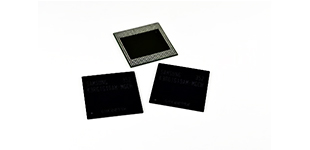LPDRAM has several Block Refresh PASR (Partial Array Self-Refresh, Auto TCSR (Temperature Compensated Self-Refresh) modes that change the refresh cycle based on chip temperature, modes that change driver strength based on usage, DPD deep power-down) modes, etc.

JSC is one of the world's largest SRAM solution providers for mobile applications. Since its first entry into the SRAM (Static Random Access Memory) market with 4M SRAM in 2001, Jeju Semiconductor continues to implement a full range of SRAM from 1M, 2M, 4M to 8M Low-power SRAM products.
| Part Number |
Density |
Data width |
Voltage |
Max Frequency |
Package Type |
Status |
Download |
| JS812164PAY-60 |
512Mb |
x16 |
1.7~1.95V |
200Mhz |
60B(8x9mm) |
T.B.D |
NULL |
| JS812324PAJ-60 |
512Mb |
x32 |
1.7~1.95V |
200Mhz |
90B(8x13mm) |
M/P |
NULL |

 JSC is one of the world's largest SRAM solution providers for mobile applications. Since its first entry into the SRAM (Static Random Access Memory) market with 4M SRAM in 2001, Jeju Semiconductor continues to implement a full range of SRAM from 1M, 2M, 4M to 8M Low-power SRAM products.
JSC is one of the world's largest SRAM solution providers for mobile applications. Since its first entry into the SRAM (Static Random Access Memory) market with 4M SRAM in 2001, Jeju Semiconductor continues to implement a full range of SRAM from 1M, 2M, 4M to 8M Low-power SRAM products.